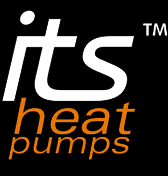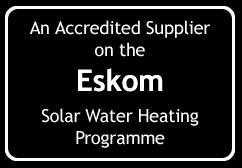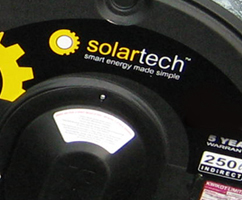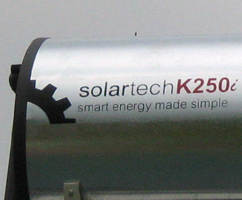

January 26th 2011
Electricity utility Eskom said that it aimed at having 925 000 solar water heaters (SWH) installed by 2013, which would result in energy savings equivalent to about 578 MW. The power generator said that since the launch of its SWH rebate in 2008, some 6,4 GWh had been saved as a result of consumers opting for solar water heating instead of electricity. Through the programme Eskom subsidises the purchase of South African Bureau of Standards approved solar systems. Eskom increased the size of the rebates in early 2010, which resulted in a rise in the installation of solar water heating systems. More than 33 000 claims have been paid to consumers who installed solar geysers in their homes. Eskom said that it would continue to offer rebates as long as funds were available. However, the level of subsidies were expected to reduce year-on-year from 2011. Discounts varied according to the size of the system installed and its associated electricity saving potential. Rebates ranged from 20% to 45%, or R2 500 to R12 500, depending on the system purchased. Consumers participating in the utility?s SWH rebate programme could purchase a SWH system from suppliers, which would take onus of reclaiming the rebate. The purchase price of the registered systems would already be discounted so that the customer was rebated at the point of sale. Thus there were two ways to receive a rebate on an accredited SWH. Previously all customers participating in the programme were responsible for claiming their rebates from Eskom following the installation of an accredited SWH from a registered supplier. ?It is up to the supplier to claim the rebate amount from Eskom. It couldn?t be easier. This new rebate process also reduces the upfront payment that the customer needs to make,? said Eskom Integrated Demand Management spokesperson Nosipho Maphumulo. Eskom noted that it had 108 accredited suppliers, 245 registered distributors and 124 registered independent installers registered on the programme. To qualify for a rebate, consumers would have to purchase an Eskom-approved system, fitted by an accredited installer. If a supplier was not selected to provide upfront discounts to customers, the customer could claim the rebate by filling out a rebate form following the installation of their system. Forms would have to be sent to the programme auditors Deloitte, within six months of the installation and rebates were paid directly into consumers' bank accounts within eight weeks. Maphumulo said that the new claims mechanism, where the supplier assumes the responsibility for claiming the rebate, should help to encourage even more South Africans to convert to solar. Source: engineeringnews.co.za |




